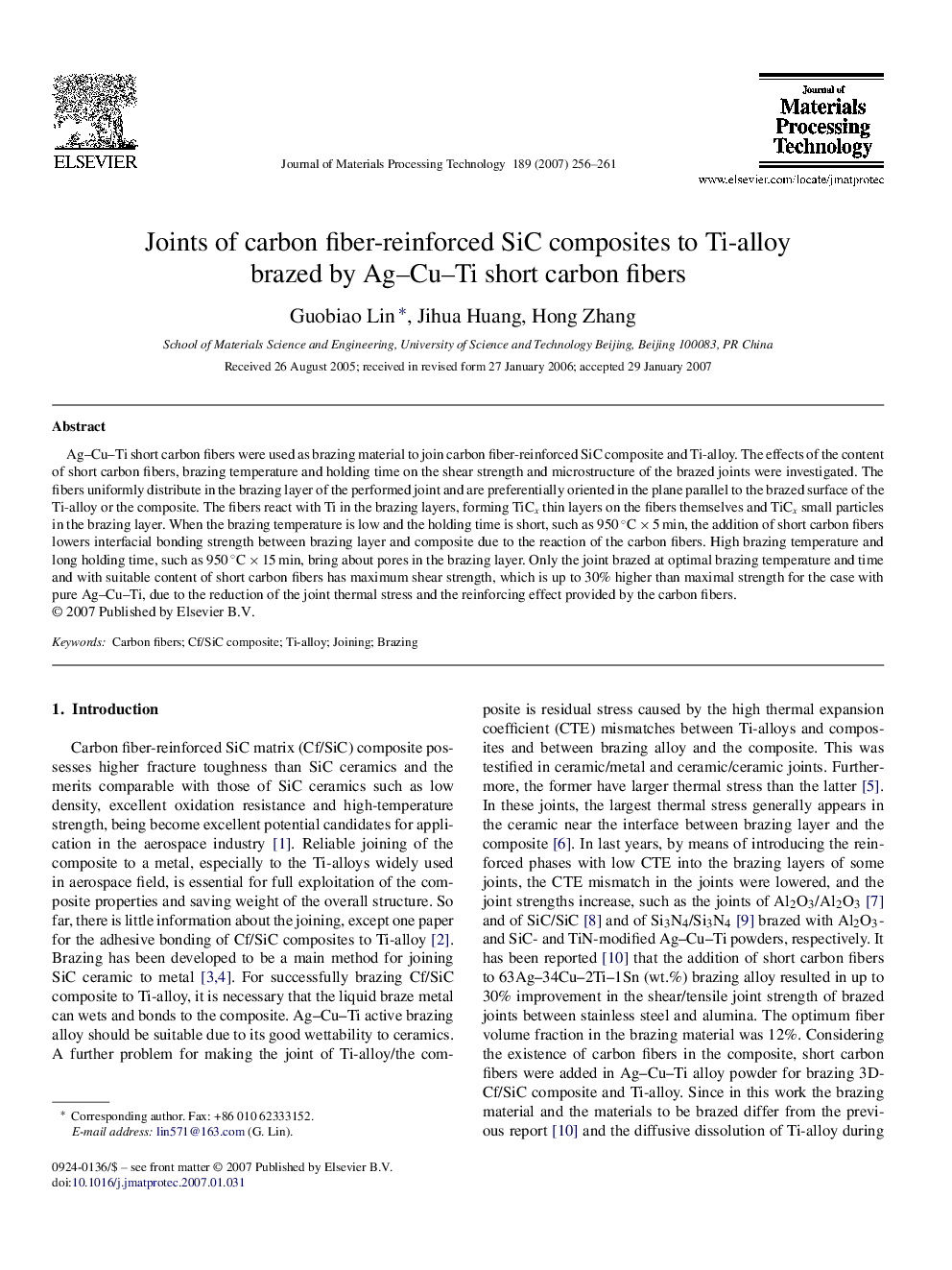| Article ID | Journal | Published Year | Pages | File Type |
|---|---|---|---|---|
| 795741 | Journal of Materials Processing Technology | 2007 | 6 Pages |
Ag–Cu–Ti short carbon fibers were used as brazing material to join carbon fiber-reinforced SiC composite and Ti-alloy. The effects of the content of short carbon fibers, brazing temperature and holding time on the shear strength and microstructure of the brazed joints were investigated. The fibers uniformly distribute in the brazing layer of the performed joint and are preferentially oriented in the plane parallel to the brazed surface of the Ti-alloy or the composite. The fibers react with Ti in the brazing layers, forming TiCx thin layers on the fibers themselves and TiCx small particles in the brazing layer. When the brazing temperature is low and the holding time is short, such as 950 °C × 5 min, the addition of short carbon fibers lowers interfacial bonding strength between brazing layer and composite due to the reaction of the carbon fibers. High brazing temperature and long holding time, such as 950 °C × 15 min, bring about pores in the brazing layer. Only the joint brazed at optimal brazing temperature and time and with suitable content of short carbon fibers has maximum shear strength, which is up to 30% higher than maximal strength for the case with pure Ag–Cu–Ti, due to the reduction of the joint thermal stress and the reinforcing effect provided by the carbon fibers.
